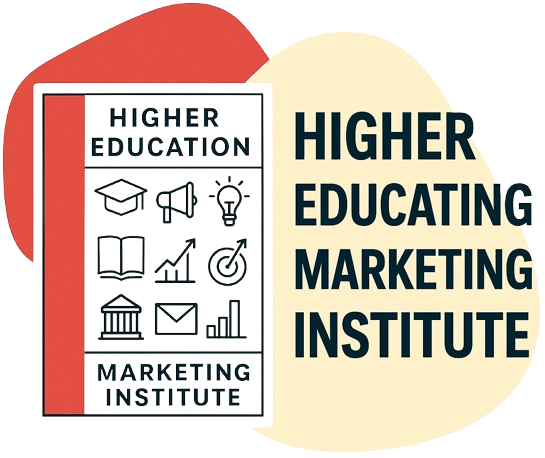Are you looking for ways to effectively reach more prospective students and increase enrollment at your higher education institution? If so, higher education inbound marketing offers an effective strategy to cultivate relationships with potential students and leverage digital channels to drive traffic, leads, and, ultimately, enrollments.
Inbound marketing is a strategy that uses organic search engine optimization (SEO), social media, content marketing, email campaigns, web design, and other methods to bring students to your school. This type of marketing helps draw people to your site by providing valuable content that answers their questions, meets their needs, and shows up near the top of search engines.
Once targets are on your site, inbound marketing strategies can help engage them in the sales and marketing funnel and move them closer to the decision to enroll at your school. Inbound marketing is an effective strategy for higher education because it focuses on creating content that appeals to and engages.
In contrast to traditional outbound marketing tactics such as radio and television ads, inbound marketing focuses on creating content that attracts rather than broadcasting
Even Google ads and social media posts, which are a form of broadcast, can contribute to the awareness stage for educational institutions to reach students.
This type of marketing is designed to draw people to your site by providing valuable content that answers their questions and meets their needs. It also allows you to build relationships with visitors by providing them with helpful, relevant information that encourages them to take action.
Introduction to Inbound Marketing
Definition of Inbound Marketing
Inbound marketing is a strategy that focuses on making content that attracts and keeps the attention of potential leads and customers. This type of marketing is designed to draw people to your website by providing valuable, relevant, and helpful content that answers their questions and meets their needs. It typically involves using organic SEO, social media, content marketing, email marketing campaigns, website design, and more.

Importance of Inbound Marketing Methodology in Higher Education
Inbound marketing is vital to any successful higher education admissions marketing strategy. This type of marketing allows college admissions professionals to develop content tailored to and resonates with potential students and their parents. Institutions can get the attention of potential students and build relationships with them by making interesting content like infographics, blog posts, ebooks, whitepapers, and videos.
Inbound marketing also helps to foster trust and credibility with potential enrollees. By creating content relevant to their needs, college admissions teams can show prospects that they understand their interests and goals, leading to greater consideration of enrollment in the school. In addition, higher education marketing teams can further encourage enrollment by creating an inbound marketing funnel and nurturing leads through targeted emails and well-crafted experiences.

Understanding Your Target Audience
For inbound marketing strategies to work in higher education, the marketing team must make a customer persona or avatar. To ensure that an institution can effectively target prospective students and their parents, it is important to understand who these audiences are thorough. When creating personas for higher education marketing, it is important to consider the demographics and psychographics of the potential students and where they are in their decision-making process. Demographic characteristics include age, gender, location, and income level. Psychographic factors like interests, values, choices in lifestyle, and reasons for going to a certain school should also be found.
Additionally, it is important to consider how these personas prefer to consume content when developing marketing strategies. This can include the types of content they prefer, which social media platforms they use, and the devices they are most likely to access it from.
A comprehensive understanding of these attributes helps ensure that an institution’s inbound marketing efforts are accurately targeted at your ideal prospective students.

Student Personas
Creating a “student persona” is an important part of any successful inbound marketing strategy for higher education institutions.
Unlike other customer personas, student personas must consider the unique qualities and values associated with potential students. This includes not only demographic characteristics such as age, gender, location, and income level but also psychographic factors such as interests, lifestyle choices, career aspirations, and motivations for attending a particular school.
It is also important to consider how they consume content when developing marketing strategies; this can include the types of content they prefer, which social media platforms they use most often, and the devices they are likely to access it from.
With all these elements considered, education marketers can create more effective inbound marketing campaigns tailored specifically to prospective students.
Several elements are unique to this audience when creating a student persona for inbound marketing.
Students are typically focused on their future careers and are likely to be interested in the academic programs and internships offered by the university. They are also likely concerned about campus life, housing options, student organizations, and recreational activities. They may also be interested in the university’s reputation and how it can help them succeed after graduation.

Parent Personas
When creating a “parent persona” for an inbound marketing strategy, it is important to consider the unique qualities and values associated with potential students’ parents. This includes demographic characteristics such as age, gender, location, and income level but also psychographic factors such as interests, lifestyle choices, and motivations for their child attending a particular school. Additionally, parent personas should consider how they consume content when developing marketing strategies; this can include the types of content they prefer, which social media platforms they use most often, and the devices they are likely to access it from.
Parents are likely concerned about their child’s future success and financial stability and may be investing significantly in their child’s education. They are likely to be interested in the academic programs offered, the quality of the faculty, the campus safety and security, and the career opportunities for graduates. Parents may also seek information about scholarships, financial aid options, student life, and housing. By understanding these unique elements, universities can create targeted content and campaigns that speak directly to the needs and concerns of parents, helping to build trust and credibility with this important constituency.

Faculty and Staff Personas
When creating a “faculty/staff persona” for an inbound marketing strategy, it is important to consider the unique qualities and values associated with potential faculty or staff members.
This includes demographic characteristics such as age, gender, location, and income level but also psychographic factors such as preferences in terms of teaching styles, research interests, and experience. Additionally, faculty/staff personas should consider how they consume content when developing marketing strategies; this can include the types of content they prefer, which social media platforms they use most often, and the devices they are likely to access it from.
With an in-depth understanding of these elements of a faculty/staff persona, higher education institutions can create more effective inbound marketing campaigns tailored specifically to their target audience – prospective faculty and staff members.
When creating a faculty/staff persona for inbound marketing for higher education, several elements are unique to this target audience:
- Faculty and staff may be looking for information related to job opportunities, research or teaching positions, or even career advancement at their current colleges and universities.
- They may also be interested in the academic programs, faculty quality, and professional development resources.
- Some may be looking for information about travel grants, research funding options, and collaboration opportunities across departments or with external organizations.
- Faculty and staff members are likely to be concerned about the university’s mission and vision and the resources and support available to help them succeed in their roles.
- They may be interested in professional development opportunities, technology and resources, and the overall working environment.
- They may also be concerned about the university’s reputation and how it impacts its ability to attract top talent and secure funding for research and other initiatives.
Universities can use this information to provide personalized experiences and support, helping to increase engagement, satisfaction, and retention.

Creating a Strong Web Presence
A strong web presence is crucial for colleges’ success in the adult education sector. In the digital age we live in now, more and more people who want to go to college use the internet to learn about their options and compare them. A strong online presence can help adult education institutions stand out. A detailed and easy site can give prospective students more information about programs, faculty, and student resources, making it easier for them to understand what makes the school special. A strong web presence can also help adult education institutions build credibility, establish their brand, and attract the right students. This can include using various online tools and platforms, such as social media, search engine optimization (SEO), and email marketing, to reach and engage prospective students. With a well-designed and effective web presence, adult education institutions can increase visibility, drive enrollments, and ultimately support the success of their future students.
Website Design
Colleges and universities’ website design is becoming increasingly important in today’s digital world.
An attractive and user-friendly design can be essential to a school’s success. It affects both the customer experience and the overall brand image. Taking the time to create a well-designed site will ensure that customers have an enjoyable experience when they visit your site and help your institution or department stand out from the competition. Furthermore, your website must be optimized for mobile devices as many people are using their phones to access the internet.

Content Creation
Content creation for the web is an important factor in ensuring the success of any online business. It involves creating content that resonates with a target audience and is suitable for use across multiple platforms. It is important to consider a few elements when creating content to achieve this.
First, understanding your target audience should be your top priority. Researching their needs, interests, and the language they use will help you create content that speaks directly to them. Additionally, you should have a goal in mind for your content — to inform, inspire or educate. This helps keep your content focused and on track.
Second, formulating a content strategy is crucial for having successful content. This means deciding what topics to discuss, how often to post, and where to post it. A comprehensive plan will ensure that you create the right type of content for the right audience at the right time.
Finally, optimizing your content should ensure that it is easily visible and accessible by search engines and readers. This involves using keywords, linking to relevant pages, and other SEO strategies to ensure that your content can be found.
By keeping these elements in mind when creating content for the web, marketers can build relevant content that resonates with their target audience and helps reach their goals.

Search Engine Optimization (SEO)
SEO is an important process for any company or individual looking to increase the visibility and visibility of their websites. SEO involves various elements that work together to optimize and improve rankings on search result pages.
Keywords are one of the most important components. Determining the most relevant keywords for a particular program or college is essential to optimizing its content and success in search engine rankings. Keywords should go far beyond titles and meta descriptions and be infused through the content to send the right message.
Organic traffic is one of the most sustainable methods in Digital marketing to obtain qualified leads.
Content is also important for SEO because it needs to be written so visitors can learn something and be interested in it. Internal links should also be a part of high-quality content because they help optimize pages and create a structure where everything is connected.
Finally, links from other websites are also important for SEO. These can help build trust and authority. To ensure your SEO campaign works, you must think about everything together. This will give you the best chance of getting higher search engine rankings.
Taken together, your website is a critical part of the inbound marketing funnel for your school.
Generating and Nurturing Leads
Generating leads is crucial in higher education inbound marketing. Institutions build trust and interest by providing valuable information to prospects and encouraging them to take action. A form submission offers a chance to capture contact information and start a conversation, nurturing the lead and offering information about the college experience. The goal is to build a relationship and help make an informed decision. Measuring conversion rates and optimizing forms and landing pages improves lead generation and increases enrollment.
Landing Pages
A landing page is a web page that serves as an entry point for a visitor. It is typically designed to capture contact information in exchange for some form of content, such as an eBook or white paper. The main goal of a landing page is to generate leads, create conversions and build relationships with potential customers.
Lead Magnets
A lead magnet is a digital asset or incentive offered to potential customers in exchange for their contact information. It can be any content from eBooks, white papers, and webinars to discounts and coupon codes. Lead magnets generate leads, build relationships, nurture, and drive conversions.
Lead Nurturing
Lead nurturing is building relationships and growing paying students at your school through personalization and automation. It involves delivering relevant content based on interests, behaviors, and past interactions. This content includes emails, webinars, blog posts, and other educational content. Through lead nurturing, institutions create an experience tailored to each prospect, helping them make an informed decision about the college.
Digital marketing offers abundant opportunities to aid prospective students in their buyer’s journey. Marketing automation tools can make the work of your admissions team that much easier.
Measuring and Optimizing Results
Akey part of inbound marketing is measuring and optimizing the results of your campaigns. This means tracking key performance indicators such as visits, form submissions, email open rates, click-through rates, and conversions. Once a baseline is established, optimization techniques can be used to increase leads and conversions.
It’s important to test different strategies to see what works testing is a form of split testing that can be used to compare different versions of a website page or landing page. By comparing results from each version and making adjustments as needed, institutions can optimize their content for the best possible outcome.
Analytics tools such as Google Analytics are useful for measuring and understanding performance.
A successful inbound marketing campaign requires careful consideration of content, links, leads, landing pages, lead magnets, and lead nurturing. Institutions can make the most of their efforts to reach their goals if they constantly measure and improve results.

Key Performance Indicators (KPIs)
Measuring the success of a project or initiative can be difficult.
Without clear metrics, it’s hard to know if you’re making progress and achieving your goals.
Key Performance Indicators (KPIs) are measurable values that help track progress toward specific objectives. KPIs provide insight into how well an organization performs in customer satisfaction, employee engagement, sales growth, operational efficiency, and more. By setting up KPIs for each area of focus, organizations can easily measure their performance and make adjustments as needed to ensure they reach their desired outcomes.
Analyzing and Improving Campaigns
- Set clear goals and objectives
- Identify key performance indicators (KPIs)
- Track visits, form submissions, email open rates, click-through rates, and conversions
- Utilize analytics tools such as Google Analytics to measure progress toward the goal
- A/B testing or Split Testing to compare different versions of a message or page
- Create personalization experiences through lead nurturing
- Monitor results over time and make adjustments where needed
- Continually reevaluate campaigns for improvement opportunities
Conclusion
Successful inbound marketing strategy requires careful consideration of content, links, leads, landing pages, lead magnets, and lead nurturing. Setting clear goals and objectives can help measure progress toward the desired outcomes. KPIs are also essential for tracking performance so adjustments can be made as needed to ensure success.
Whether your first contact is at college fairs, in search results, a blog post, video content, or on a campus visit, students are now learning about you on their own time. There is increased competition for high school juniors and seniors or working adults new students are leveling the playing field and have more power in the process, given the affordable way colleges produce new content.
Your future student body will take advantage of alternative forms of the college fair. They’ll approach your educational opportunities keenly, giving them the greatest conversion rate when searching for a job.
Inbound marketing for higher education is a great way to help them get started.
Recap of Key Takeaways
- Set clear goals and objectives
- Identify key performance indicators (KPIs)
- Track visits, form submissions, email open rates, click-through rates, and conversions
- Utilize analytics tools such as Google Analytics to measure progress toward the goal
- A/B testing or Split Testing to compare different versions of ads, messages or landing or web pages
- Create personalization experiences through lead nurturing
- Monitor results over time and make adjustments where needed
- Continually reevaluate campaigns for improvement opportunities
Final Thoughts on Higher Education Inbound Marketing
Higher education institutions can benefit greatly from inbound marketing campaigns. Setting clear goals and objectives, keeping track of key performance indicators, using analytics tools, and trying out different strategies can help educational institutions reach their enrollment goals. Careful consideration of content, links, leads, landing pages, and lead nurturing is essential for optimizing the results of inbound marketing initiatives. With careful planning and execution, institutions can maximize their efforts to reach enrollment goals. Outbound marketing strategies will always be needed, but with inbound marketing, you can get leads, prospects, and students and have a great name when your more traditional marketing strategies engage those prospects.
Next Steps for Implementing Successful Inbound Marketing Strategies
What better time to start developing a successful inbound marketing program for higher education institutions than today?
By getting to know the modern student and developing individualized personas, higher-ed marketers in colleges and universities can craft relevant content that resonates with their desired audiences.
Through careful planning and execution of your inbound marketing for higher education efforts, you can create content that effectively engages prospective students and drives them further down the funnel toward enrollment.
And then, it’s time for a vacation.

Check out our Higher Education Marketing FAQ (Frequently Asked Questions).




